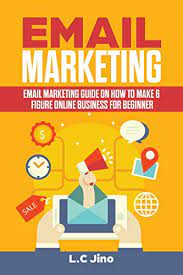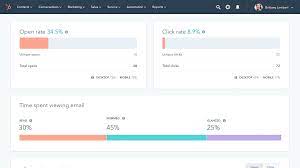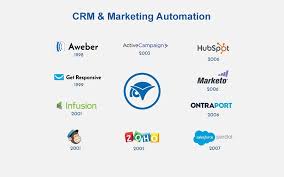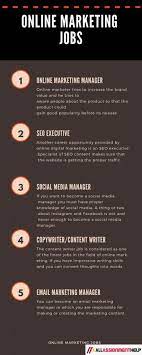The Ultimate Guide to Email Marketing: Unlocking the Power of Email for Business Success
In today’s digital world, where communication happens at lightning speed, email remains one of the most effective and reliable tools for businesses to connect with their audience. With billions of active email users worldwide, it’s no wonder that email marketing continues to be a powerful strategy for businesses of all sizes.
To help businesses harness the full potential of email marketing, we have created “The Ultimate Guide to Email Marketing,” an ebook designed to provide you with the knowledge and tools necessary to launch successful email campaigns.
Why Email Marketing?
Email marketing offers numerous benefits that make it an indispensable tool for modern businesses. Here are just a few reasons why you should consider incorporating email marketing into your overall marketing strategy:
Direct and Personalized Communication: Unlike other marketing channels, email allows you to communicate directly with your audience. By segmenting your email list and personalizing your messages, you can deliver targeted content that resonates with each recipient.
Cost-Effective: Compared to traditional marketing methods, such as print advertising or direct mail campaigns, email marketing is significantly more cost-effective. With minimal investment, you can reach a large number of potential customers.
Increased Conversion Rates: Studies consistently show that email has a higher conversion rate compared to other marketing channels. When done right, well-crafted emails can drive traffic to your website, generate leads, and boost sales.
Measurable Results: With advanced analytics tools available for email marketing platforms, you can track key metrics such as open rates, click-through rates, and conversion rates. This data enables you to fine-tune your campaigns and optimize results over time.
What You’ll Learn in Our Ebook
“The Ultimate Guide to Email Marketing” covers everything you need to know about creating effective email campaigns that drive results. Here’s a sneak peek at some of the topics covered:
Building Your Email List: Learn strategies to grow your email list organically and engage with your subscribers effectively.
Crafting Compelling Emails: Discover the art of writing engaging subject lines, creating captivating content, and incorporating persuasive calls-to-action.
Designing Eye-Catching Templates: Get tips on designing visually appealing email templates that capture attention and reflect your brand identity.
Personalization and Segmentation: Understand the importance of segmenting your audience and tailoring your messages to specific customer segments for maximum impact.
Automation and Drip Campaigns: Learn how to set up automated email sequences to nurture leads, onboard new customers, or re-engage inactive subscribers.
A/B Testing and Optimization: Discover techniques for testing different elements of your emails, such as subject lines, images, or CTAs, to optimize performance and achieve better results.
Compliance and Best Practices: Stay up-to-date with email marketing regulations and learn best practices to ensure your campaigns are effective and legally compliant.
Unlock the Power of Email Marketing Today
Whether you’re a small business owner looking to expand your customer base or a seasoned marketer aiming to enhance your existing campaigns, “The Ultimate Guide to Email Marketing” is a valuable resource that will empower you with the knowledge needed to succeed in today’s competitive digital landscape.
Download our ebook today and embark on a journey towards unlocking the power of email marketing for your business success. Start connecting with your audience on a deeper level, driving engagement, nurturing leads, and ultimately increasing conversions.
Essential Answers: Your Guide to Email Marketing eBook FAQs
- What is the best way to get started with an email marketing ebook?
- How much does an email marketing ebook cost?
- What are the key benefits of using an email marketing ebook?
- What tips and strategies should I use for successful email marketing?
- How can I ensure my emails reach my target audience?
- Are there any legal considerations when creating an email marketing ebook?
- How often should I send out emails as part of my email marketing strategy?
- How can I measure the success of my email campaigns?
What is the best way to get started with an email marketing ebook?
Getting started with an email marketing ebook involves a few key steps to ensure its success. Here’s a guide to help you begin:
- Define Your Goals: Before diving into creating an ebook, clarify your objectives. Are you aiming to generate leads, educate your audience, or establish yourself as an industry expert? Understanding your goals will shape the content and structure of your ebook.
- Identify Your Target Audience: Determine who your ideal readers are. Consider their demographics, interests, and pain points. Tailor your content to resonate with this specific audience and address their needs effectively.
- Plan Your Content: Outline the chapters or sections of your ebook based on the topics you want to cover. Create a logical flow that guides readers from the basics to more advanced concepts. Use subheadings and bullet points for easy navigation and readability.
- Conduct Thorough Research: Ensure that the information provided in your ebook is accurate, up-to-date, and valuable. Support your content with credible sources, statistics, case studies, and examples that reinforce your points.
- Craft Engaging Content: Write compelling copy that captures readers’ attention from the very beginning. Use clear language, storytelling techniques, and relatable examples to keep readers engaged throughout the ebook.
- Design an Eye-Catching Layout: Pay attention to the visual appeal of your ebook. Use professional design tools or hire a graphic designer if needed. Incorporate images, infographics, charts, or illustrations to break up text and make it visually appealing.
- Include Actionable Tips and Takeaways: Provide practical tips and actionable advice that readers can implement immediately after reading your ebook. This will make it more valuable and increase its impact on their email marketing efforts.
- Optimize for Conversion: Strategically place call-to-action (CTA) buttons or links throughout the ebook to drive conversions or encourage further engagement with your brand or services.
- Proofread and Edit: Ensure your ebook is error-free by thoroughly proofreading and editing the content. Check for grammar, spelling, and formatting errors. Consider having someone else review it for a fresh perspective.
- Create a Landing Page: Design a dedicated landing page to promote your ebook. Include an enticing description, key benefits, and a clear call-to-action to encourage visitors to download it.
- Promote Your Ebook: Utilize various marketing channels to promote your ebook. Leverage your website, blog, social media platforms, email newsletters, and partnerships with influencers or industry experts to reach a wider audience.
- Track and Analyze Results: Monitor the performance of your ebook using analytics tools. Track downloads, engagement levels, conversion rates, and feedback from readers. Use this data to refine your future email marketing strategies.
Remember that creating an ebook is an ongoing process. Continuously update and improve it based on new industry trends or feedback from readers to ensure its relevance over time.
How much does an email marketing ebook cost?
The cost of an email marketing ebook can vary depending on the content and length. Generally, prices range from $10 to $50.
What are the key benefits of using an email marketing ebook?
Using an email marketing ebook offers several key benefits for businesses:
- Comprehensive Knowledge: An email marketing ebook provides a comprehensive understanding of email marketing strategies, techniques, and best practices. It covers a wide range of topics, from building an email list to crafting compelling emails and optimizing campaigns. By reading the ebook, businesses gain in-depth knowledge that can be applied to their email marketing efforts.
- Practical Guidance: The ebook offers practical guidance on how to implement effective email marketing campaigns. It provides step-by-step instructions, tips, and examples that businesses can follow to create engaging emails, design visually appealing templates, segment their audience, and automate their campaigns. This practical guidance helps businesses save time and effort by providing proven strategies for success.
- Enhanced Campaign Performance: By leveraging the insights provided in the ebook, businesses can enhance the performance of their email marketing campaigns. They learn techniques for personalizing messages, conducting A/B testing to optimize results, and analyzing key metrics to make data-driven decisions. These strategies help improve open rates, click-through rates, conversions, and overall campaign effectiveness.
- Cost-Effectiveness: An email marketing ebook is a cost-effective resource compared to attending seminars or hiring consultants for training purposes. Businesses can access valuable information at a fraction of the cost while still receiving expert advice on how to maximize their return on investment (ROI) through email marketing.
- Long-Term Reference: An ebook serves as a long-term reference guide that businesses can revisit whenever they need support or inspiration for their email marketing efforts. It becomes a go-to resource for refreshing knowledge or exploring new ideas as trends evolve in the ever-changing digital landscape.
- Competitive Advantage: By implementing the strategies outlined in an email marketing ebook effectively, businesses gain a competitive advantage over competitors who may not have access to such comprehensive resources. They can leverage proven tactics and industry insights to stand out in crowded inboxes and engage with their target audience more effectively.
In summary, using an email marketing ebook equips businesses with knowledge, guidance, and practical strategies to enhance their email marketing campaigns. It helps improve campaign performance, saves costs, provides a long-term reference, and gives a competitive edge in the digital marketplace.
What tips and strategies should I use for successful email marketing?
Successful email marketing requires a thoughtful approach and the implementation of effective strategies. Here are some tips to help you achieve success in your email marketing campaigns:
- Build a Quality Email List: Focus on growing an organic and engaged email list. Offer valuable incentives, such as exclusive content or discounts, to encourage visitors to subscribe to your emails. Avoid purchasing email lists as they often result in low engagement and can harm your sender reputation.
- Segment Your Audience: Segmenting your email list allows you to send targeted and personalized content to specific groups of subscribers based on their demographics, interests, or past interactions with your brand. This increases the relevance of your emails and improves engagement rates.
- Craft Compelling Subject Lines: Your subject line is the first thing recipients see in their inbox, so make it attention-grabbing and compelling. Use clear language, create a sense of urgency or curiosity, and keep it concise (around 40-50 characters) to entice recipients to open your emails.
- Create Engaging Content: Provide value to your subscribers by delivering informative, entertaining, or educational content that aligns with their interests and needs. Use a conversational tone, include visuals where appropriate, and make sure the email is scannable with clear headings and bullet points.
- Personalize Your Emails: Address subscribers by their names and use dynamic content that adapts based on their preferences or past interactions with your brand. Personalization helps create a stronger connection with your audience and enhances engagement.
- Optimize for Mobile Devices: With the majority of emails being opened on mobile devices, it’s crucial that your emails are mobile-friendly. Ensure that they are responsive, load quickly, have legible fonts, and use images that scale well on smaller screens.
- Test Different Elements: A/B testing allows you to experiment with different elements of your emails (e.g., subject lines, CTAs, layouts) to identify what resonates best with your audience. Test one element at a time, measure the results, and optimize accordingly.
- Use Automation: Implement automated email sequences to streamline your communication and nurture leads. Set up welcome emails, abandoned cart reminders, or re-engagement campaigns to deliver the right message at the right time based on subscriber behavior.
- Monitor and Analyze Results: Regularly track key metrics such as open rates, click-through rates, conversion rates, and unsubscribe rates to evaluate the effectiveness of your campaigns. Use this data to refine your strategies and improve future email marketing efforts.
- Maintain Email Deliverability: Ensure that your emails reach subscribers’ inboxes by following best practices for email deliverability. Keep a clean email list, use double opt-in processes, avoid spam triggers in your content, and monitor your sender reputation.
By implementing these tips and strategies consistently, you can enhance the effectiveness of your email marketing campaigns and achieve better results in terms of engagement, conversions, and customer loyalty.
How can I ensure my emails reach my target audience?
Ensuring that your emails reach your target audience is crucial for the success of your email marketing campaigns. Here are some key strategies to help you maximize the deliverability of your emails:
- Build a Quality Email List: Start by building an email list with permission-based subscribers who have explicitly opted in to receive communications from you. Avoid purchasing or using third-party lists, as they often contain outdated or uninterested contacts, which can harm your deliverability.
- Use Double Opt-In: Implement a double opt-in process where subscribers confirm their email address after signing up. This helps ensure that the email addresses on your list are valid and owned by engaged individuals.
- Segment Your Email List: Segmenting your email list based on various criteria such as demographics, interests, or purchase history allows you to send targeted and relevant content to specific groups of subscribers. This increases engagement and reduces the likelihood of recipients marking your emails as spam.
- Maintain Good Sender Reputation: Your sender reputation plays a crucial role in determining whether your emails land in the inbox or spam folder. To maintain a good reputation, follow best practices such as using a reputable email service provider (ESP), authenticating your domain with SPF, DKIM, and DMARC records, and monitoring and addressing any complaints or bounces promptly.
- Craft Engaging Subject Lines: Write compelling subject lines that grab attention and entice recipients to open your emails. Avoid using spam trigger words or misleading tactics that may lead to higher spam complaints or lower open rates.
- Optimize Email Content: Create valuable and engaging content that resonates with your target audience. Personalize emails whenever possible by addressing recipients by name and tailoring the content based on their preferences or past interactions.
- Monitor Email Deliverability Metrics: Regularly monitor key metrics such as open rates, click-through rates, bounce rates, and spam complaints to identify any issues affecting deliverability. Analyze these metrics to refine your email strategies and improve future campaigns.
- Test and Refine: Conduct A/B testing on different elements of your emails, such as subject lines, content, layouts, or CTAs. This helps you identify what resonates best with your audience and optimize your campaigns accordingly.
- Comply with Email Regulations: Familiarize yourself with email marketing regulations, such as the General Data Protection Regulation (GDPR) or the CAN-SPAM Act, and ensure that your email campaigns adhere to these guidelines. Provide clear unsubscribe options and honor opt-out requests promptly.
- Monitor ISP Feedback Loops: Sign up for ISP (Internet Service Provider) feedback loops to receive notifications when recipients mark your emails as spam. This allows you to take immediate action by removing those recipients from your list or investigating any potential issues.
By implementing these strategies, you can improve the chances of reaching your target audience’s inbox and increase the effectiveness of your email marketing efforts. Remember to consistently monitor and adapt your approach based on deliverability metrics to maintain a successful email marketing campaign.
Are there any legal considerations when creating an email marketing ebook?
When creating an email marketing ebook, it’s important to consider legal regulations and best practices to ensure compliance and protect both your business and your subscribers. Here are some key legal considerations:
- Permission-Based Marketing: Ensure that you have obtained proper consent from individuals before adding them to your email list. Implement a double opt-in process where subscribers confirm their subscription to ensure explicit consent.
- Privacy Policies: Clearly outline your data collection, storage, and usage practices in a privacy policy accessible to subscribers. Comply with applicable data protection laws, such as the General Data Protection Regulation (GDPR) in the European Union or the CAN-SPAM Act in the United States.
- Unsubscribe Mechanism: Provide a clear and easy-to-use unsubscribe mechanism in every email you send. Honour unsubscribe requests promptly to comply with anti-spam regulations.
- Anti-Spam Compliance: Familiarize yourself with anti-spam laws and regulations applicable in your jurisdiction, such as the CAN-SPAM Act or Canada’s Anti-Spam Legislation (CASL). Comply with requirements regarding identification information, subject lines, and content of commercial emails.
- Intellectual Property Rights: Ensure that you have appropriate permissions for any copyrighted material used within your ebook, including images, graphics, or text excerpts. Give credit where necessary and respect intellectual property rights.
- Affiliate Disclosures: If you include affiliate links or promote products/services within your ebook for which you receive compensation, disclose those relationships clearly to maintain transparency with your readers.
- Age Restrictions: If your ebook is targeted towards minors or contains content that may not be suitable for certain age groups, implement age verification mechanisms or obtain parental consent where required by law.
- International Compliance: If you have subscribers from different countries, be aware of international laws governing email marketing practices and adapt your strategies accordingly.
- Disclaimer of Liability: Include a disclaimer stating that the information provided in your ebook is for informational purposes only and does not constitute professional advice. Clarify that readers should consult professionals for specific guidance.
- Consult Legal Professionals: If you have any concerns or questions regarding the legal aspects of your email marketing ebook, it’s advisable to consult with legal professionals who specialize in data protection, intellectual property, and online marketing laws.
Remember, this information is intended as a general guide and does not substitute for professional legal advice. Laws and regulations can vary, so it’s essential to stay informed about the specific requirements applicable to your jurisdiction and industry.
How often should I send out emails as part of my email marketing strategy?
Determining the frequency of your email marketing campaigns is an important aspect of your strategy. While there is no one-size-fits-all answer, here are some factors to consider when deciding how often to send out emails:
- Audience Preferences: Consider your target audience and their preferences. Do they prefer frequent updates or less frequent communication? Analyze their engagement patterns and feedback to gauge their expectations.
- Content Relevance: Ensure that the content you send is valuable and relevant to your subscribers. If you have engaging content that adds value, you can consider more frequent emails. However, if you struggle to consistently provide valuable content, it may be better to space out your emails.
- Avoid Overwhelming Subscribers: Bombarding subscribers with too many emails can lead to unsubscribes or a decrease in engagement. Respect their inbox and aim for a balance between staying top-of-mind and avoiding annoyance.
- Test and Monitor: Conduct A/B testing with different frequencies to determine what works best for your audience. Monitor key metrics such as open rates, click-through rates, and unsubscribe rates to understand the impact of different frequencies on engagement.
- Consider Different Campaign Types: The frequency may vary depending on the type of campaign you’re running. For example, promotional campaigns may have a higher frequency during sales periods, while newsletters or informational content may be sent less frequently.
- Opt-in Preferences: Pay attention to the preferences indicated by subscribers during the opt-in process or in their account settings. Some subscribers may want daily updates, while others prefer weekly digests or monthly newsletters.
- Seasonal Considerations: Take into account seasonal factors that may affect your business or industry—holidays, special events, or peak seasons might warrant more frequent communication.
Remember that finding the right email frequency is an ongoing process of testing, analyzing results, and adapting based on feedback from your audience. Regularly review your email performance metrics and adjust your strategy accordingly to maintain a healthy balance between engagement and respect for your subscribers’ inboxes.
How can I measure the success of my email campaigns?
Measuring the success of your email campaigns is crucial to understanding their effectiveness and making data-driven decisions to optimize future campaigns. Here are some key metrics and methods you can use to measure the success of your email campaigns:
- Open Rate: This metric measures the percentage of recipients who open your emails. A higher open rate indicates that your subject lines and pre-header text are compelling enough to grab recipients’ attention. To improve open rates, consider testing different subject lines and optimizing them based on what resonates with your audience.
- Click-Through Rate (CTR): CTR measures the percentage of recipients who click on a link within your email. It helps gauge how engaging your content is and how well your call-to-action (CTA) prompts recipients to take action. A higher CTR indicates that your content is relevant and compelling. To improve CTR, ensure clear and enticing CTAs, optimize email design for easy navigation, and provide valuable content.
- Conversion Rate: Conversion rate measures the percentage of recipients who complete a desired action after clicking on a link in your email, such as making a purchase or signing up for a newsletter. It directly reflects the effectiveness of your email in driving desired outcomes. To improve conversion rates, ensure a seamless user experience from email to landing page, optimize landing page design, and align messaging throughout the customer journey.
- Bounce Rate: Bounce rate measures the percentage of emails that were not delivered successfully to recipients’ inboxes due to various reasons like invalid or inactive email addresses or technical issues. High bounce rates can negatively impact deliverability and indicate issues with list quality or email hygiene practices. Regularly clean and update your email list to minimize bounce rates.
- Unsubscribe Rate: Unsubscribe rate measures the percentage of recipients who choose to unsubscribe from receiving future emails from you after receiving a particular campaign. While some unsubscribes are normal, an unusually high unsubscribe rate may indicate issues with email frequency, content relevance, or targeting. Monitor this metric and analyze feedback from unsubscribers to identify areas for improvement.
- Revenue/ROI: If your email campaigns are directly tied to sales or revenue generation, tracking the revenue generated from specific campaigns can provide valuable insights into their effectiveness. Calculate the return on investment (ROI) by comparing the cost of running the campaign to the revenue it generates.
- A/B Testing: Conduct A/B tests by creating two versions of your emails with slight variations in elements such as subject lines, CTAs, or design. By measuring the performance of each version, you can identify which elements resonate better with your audience and optimize future campaigns accordingly.
Remember that success metrics can vary depending on your campaign goals and industry. Regularly analyze these metrics and use them as a basis for continuous improvement and optimization of your email marketing strategy.




